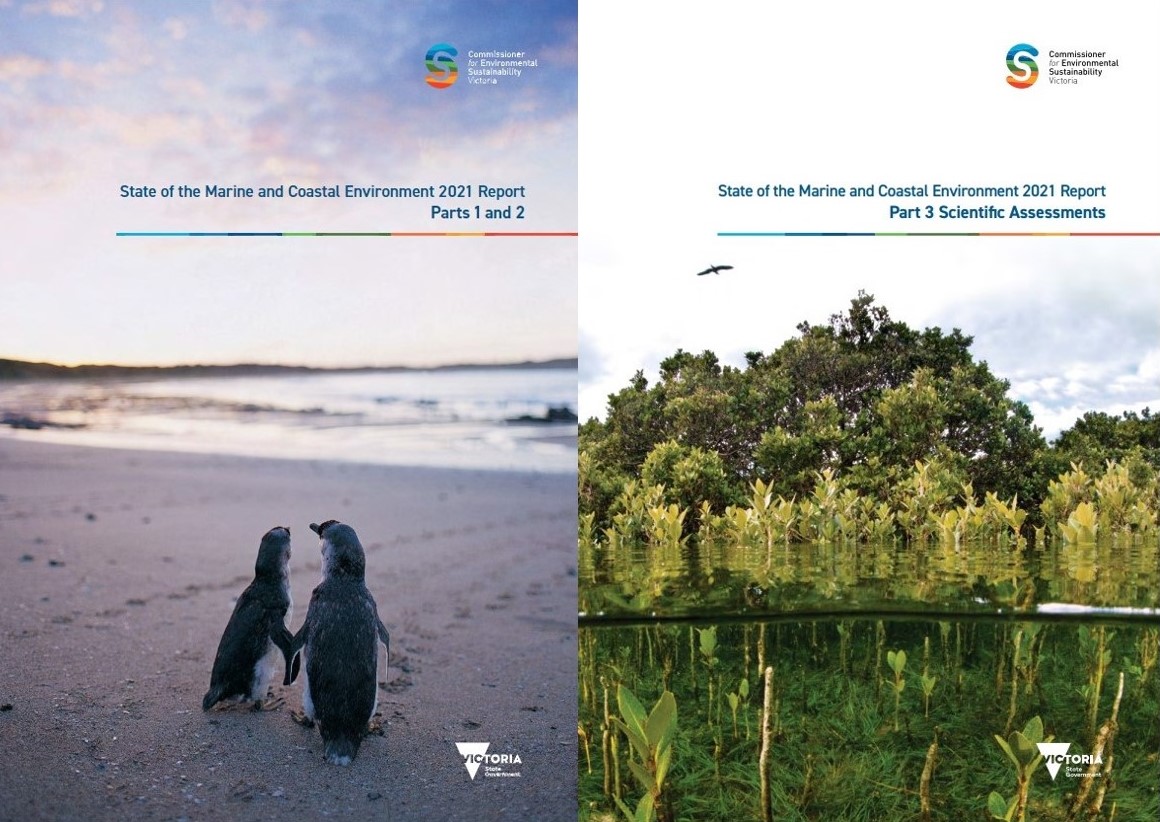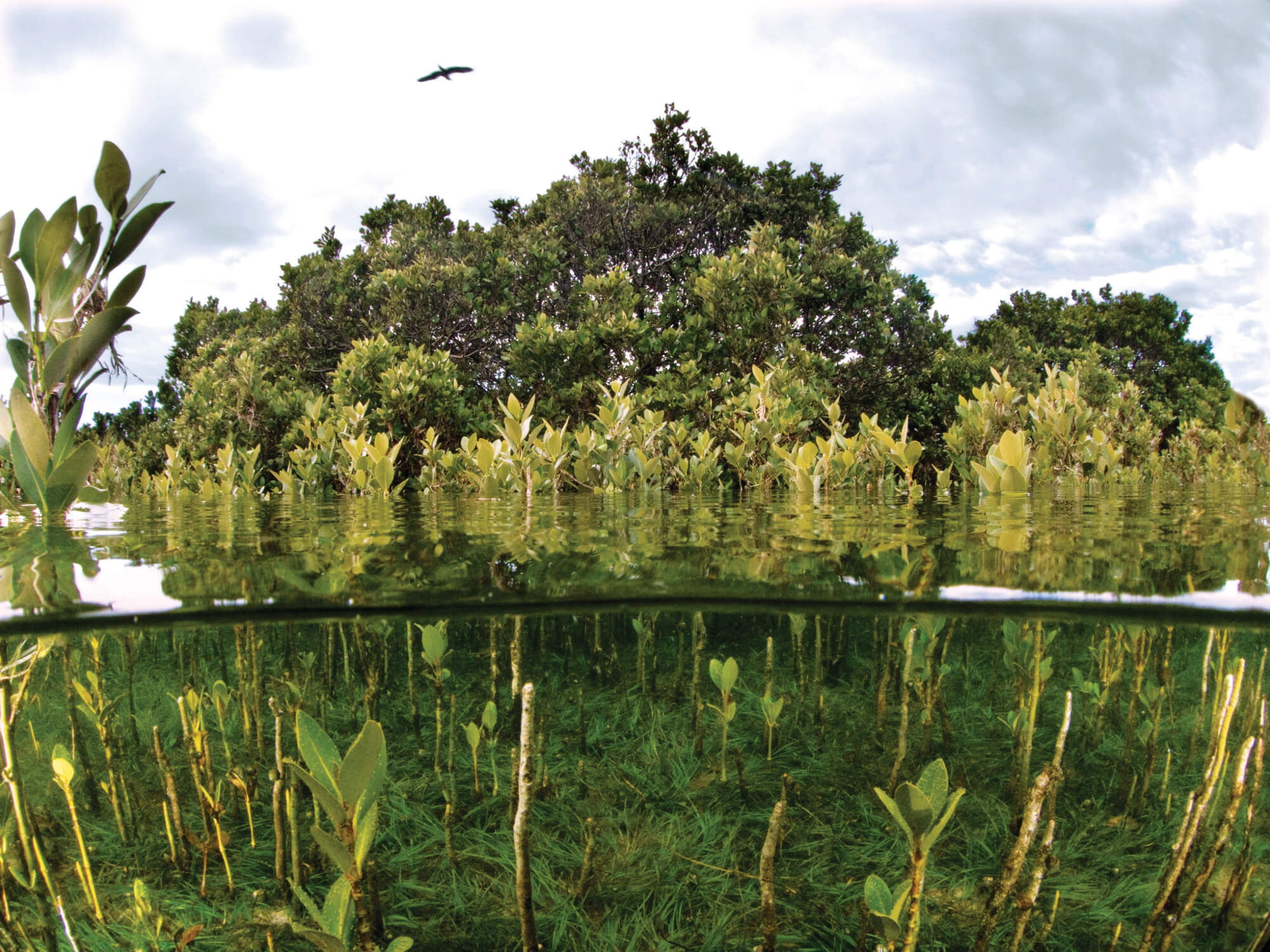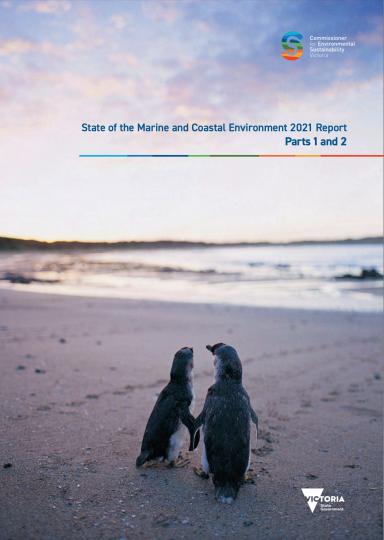Report publication explained
The Report publication is presented in three parts, as two books.
- Parts 1 and 2 - Summary Report: A comprehensive overview of the science and strategic analysis of the complete Report.
- Part 3 - Scientific Assessments: The comprehensive, peer-reviewed scientific assessments of specific issues and regions that form the evidence base for the indicator report card, summaries and key findings are distilled in Part 1.

View the Publication link below to access Report parts and supporting materials including:
Continue reading below, for information on the Report themes, indicators, and research inputs.
About the Report publication
The Report includes a historic baseline study of the health of five Victorian marine and coastal environments: Port Phillip Bay, Western Port, Corner Inlet and Nooramunga, Gippsland Lakes and Victoria's System of Marine National Parks and Sanctuaries.
The report assesses the overall health of these five regions based on existing marine and coastal science.
The report also includes assessments conducted on a statewide scale. The range of assessment depends on the localisation of the impacts associated with each indicator and the spatial scale of the supporting evidence.
Importantly, this report coincides with recent legislative and policy reform for marine and coastal management. This report recognises the environmental, social and economic value of Victoria’s marine and coastal environments and their importance to our health, happiness and prosperity.
A range of state, national and international public policies underpin the Report.
Themes and indicators
The Report presents 215 assessments of 82 indicators of ecosystem health and social science.
The 82 indicators assessed cover nine themes of ecosystem health and social science:
- Water quality and catchment inputs
- Litter and pollution
- Biodiversity
- Seafloor integrity and health
- Pests and invasive species
- Climate and climate change impacts
- Managing coastal hazard risks
- Communities
- Stewardship and collaborative management
Research inputs
This report is a compilation of science and information from many sources - Australian and Victorian government agencies, local government, catchment management authorities, universities, citizen scientists and non-government organisations.
Working closely with the Victorian Department of Environment, Land, Water and Planning (DELWP) and associated agencies, and expanding our science program to include non-government organisations, we have aimed to model an approach that can be applied to future reporting.
Assessments
Each indicator’s scientific assessment includes:
- metrics used to measure the status and trend
- data confidence
- data source
- region covered by the indicator (statewide or a particular region)
- reason for assessing the indicator
- indicator’s performance.
Legislation and policy
This report builds on the State of the Bays 2016 Report and coincides with recent reform of marine and coastal management in Victoria.
This report is prepared according to the Marine and Coastal Act 2018, which commits the Commissioner for Environmental Sustainability (CES) to issuing a five-yearly State of the Marine and Coastal Environment Report with three objectives:
- the condition of the marine and coastal environment
- the environmental, social and economic benefits of the marine and coastal environment
- threats to the marine and coastal environment.
The first full report is due five years after the release of the Marine and Coastal Policy 2020, however given that it has been five years since the State of the Bays 2016 Report, it is timely to provide an independent update on the health of Victoria’s marine and coastal environments for those regions where adequate science is currently available.
Read more about the policy context related to this Report.
- Return to the State of the Marine and Coastal Environment 2021 Report home page


